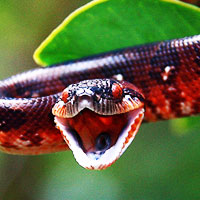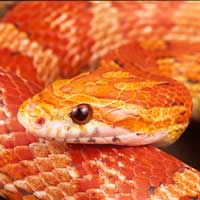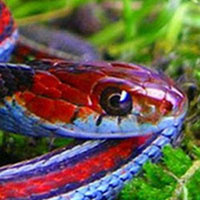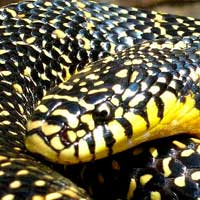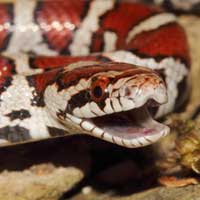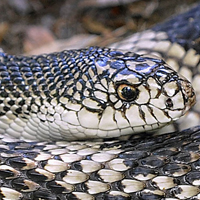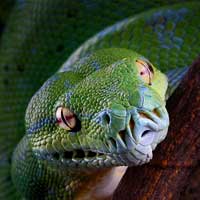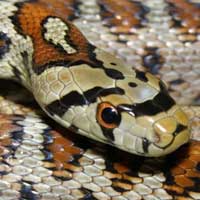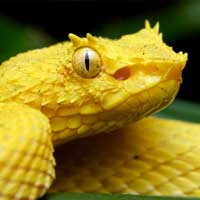Everything You Need to Know About the Motley Corn Snake
The Motley Corn Snake is a morph of the Corn Snake, which is scientifically named Pantherophis guttatus. It belongs to the Colubridae family, a large group of non-venomous snakes.
Scientific Name: Pantherophis guttatus
Snake Family: Colubridae
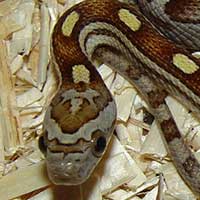
Motley Corn Snake: An Overview
The Motley Corn Snake is a captivating morph of the corn snake (Pantherophis guttatus), characterized by its unique pattern of elongated or circular blotches along its back. This morph is highly sought after for its striking appearance and calm temperament. Non-venomous and easy to care for, the Motley Corn Snake is an excellent pet for beginners and experienced reptile enthusiasts alike. In this guide, we’ll explore its habitat, diet, behavior, and care requirements.
Where Do Motley Corn Snakes Thrive?
Although the Motley Corn Snake is a captive-bred morph, its natural counterparts inhabit diverse environments across the southeastern United States. Replicating these conditions in captivity ensures optimal health and comfort for your pet.
| Habitat Feature | Description |
|---|---|
| Geographic Range | Southeastern United States |
| Preferred Environment | Woodlands, grasslands, and agricultural fields |
| Climate | Temperate, with moderate humidity levels |
What Does a Motley Corn Snake Eat?
The Motley Corn Snake is a carnivore, thriving on a diet of small mammals and birds. A consistent feeding schedule is key to maintaining its health and well-being.
- Juveniles: Feed on pinky mice every 5-7 days.
- Adults: Feed on adult mice or small rats every 7-10 days.
- Prey Size: Ensure prey is no larger than 1.5 times the snake’s girth.
- Hydration: Provide fresh water in a shallow dish for drinking and soaking.
Behavior and Temperament of the Motley Corn Snake
Motley Corn Snakes are known for their calm and curious nature, making them a favorite among snake enthusiasts. Their predictable behavior is perfect for handling and observation.
- Docile Nature: Rarely defensive and highly tolerant of handling.
- Activity Level: Primarily nocturnal but can show activity during the day.
- Climbing Behavior: Enjoys exploring branches and climbing surfaces in its enclosure.
How to Ensure a Healthy and Long Life for Your Motley Corn Snake
With proper care, Motley Corn Snakes can live up to 15-20 years in captivity. Maintaining a clean environment and monitoring their health are crucial for their well-being.
| Health Issue | Symptoms | Prevention |
|---|---|---|
| Respiratory Infections | Wheezing, open-mouth breathing | Maintain proper humidity and temperature |
| Skin Shedding Issues | Incomplete or stuck sheds | Provide adequate humidity levels |
| Parasites | Visible mites, itching | Clean and disinfect the enclosure regularly |
Reproductive Traits of the Motley Corn Snake
Motley Corn Snakes are oviparous, meaning they lay eggs. Breeding this morph is relatively straightforward with the right conditions.
- Mating Season: Late winter to early spring.
- Incubation Period: Approximately 55-60 days.
- Clutch Size: Typically 10-30 eggs.
- Maintain an incubation temperature of 80-85°F for optimal egg development.
How to Handle and Care for Your Motley Corn Snake
Caring for a Motley Corn Snake is straightforward, making it an ideal pet for beginners and experienced keepers. Proper handling and maintenance ensure a happy and healthy snake.
- Provide a temperature gradient of 75-85°F in the enclosure.
- Use a substrate like aspen shavings or coconut fiber to mimic their natural environment.
- Include hiding spots, climbing branches, and enrichment items.
- Handle gently and regularly to build trust and reduce stress.
- Ensure the enclosure is cleaned frequently and fresh water is always available.
